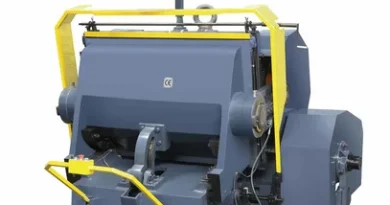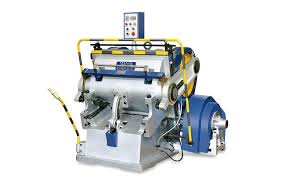Integrating Digital Technology in Die-Cutting: Transforming Precision and Efficiency
The Advent of Digital Die-Cutting
The progression from traditional, manually operated die-cutting machines to digitally controlled systems marks a significant milestone in the manufacturing sector. This transition has been driven by the demand for greater precision, versatility, and speed in production processes. Digital die-cutting machines, equipped with advanced software, allow for intricate cuts with minimal material waste, revolutionizing how manufacturers approach design and fabrication.
Core Advantages of Digital Integration
- Precision and Flexibility: Digital die-cutting machines offer unprecedented precision in cutting various materials, from paper and plastic to metal and textiles. The flexibility to quickly switch between designs without changing physical dies reduces downtime and enhances productivity.
- Automation and Speed: Automated feeding systems and cutting mechanisms significantly increase the speed of production. Coupled with digital accuracy, these machines can produce large volumes of complex designs much faster than traditional methods.
- Reduced Material Waste: Precision cutting minimizes material waste, which is both cost-effective and environmentally friendly. Digital systems can optimize layouts to ensure the most efficient use of materials.
- Ease of Use and Reduced Labor Costs: With user-friendly digital interfaces, operators can easily adjust settings and designs, reducing the need for specialized training. Automation also means fewer operators are needed, lowering labor costs.
Applications Across Industries
Digital die-cutting technology has found applications in a wide range of industries. In packaging, it allows for the creation of custom boxes and displays with unique shapes and sizes. The electronics industry benefits from precise cuts for components and insulating materials. In textiles, digital die-cutting enables detailed patterns and designs for apparel and upholstery, demonstrating its versatility and adaptability.
Future Prospects and Technological Advancements
The future of digital die-cutting looks promising, with ongoing advancements in software algorithms, machine learning, and artificial intelligence poised to further enhance precision, efficiency, and automation. These developments are expected to open new avenues for customization, enabling manufacturers to offer more personalized products and respond quickly to market trends.
Conclusion
The integration of digital technology into die-cutting machines has transformed the manufacturing landscape, offering enhanced precision, efficiency, and versatility. As this technology continues to evolve, it will undoubtedly unlock new potentials for innovation in product design and production, reinforcing the critical role of die-cutting in modern manufacturing processes.



